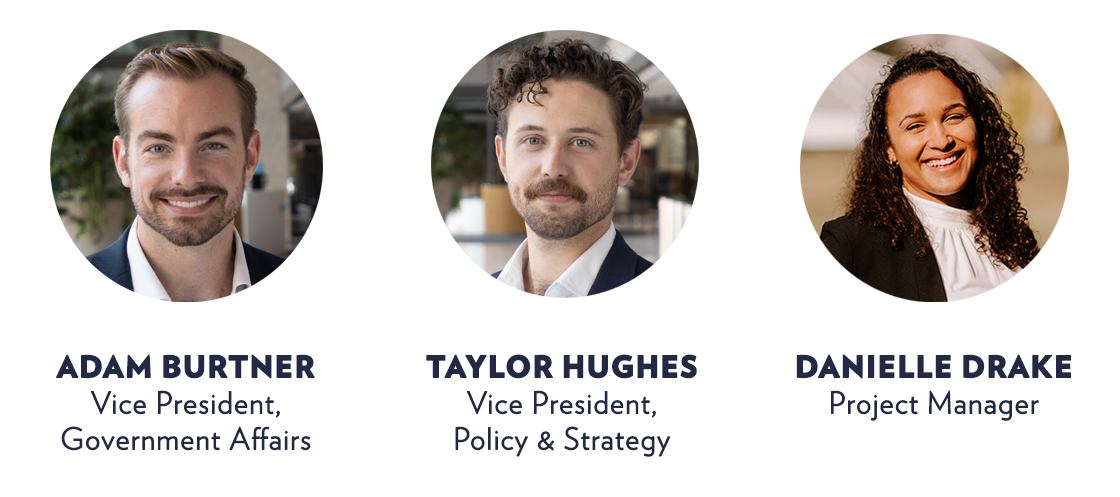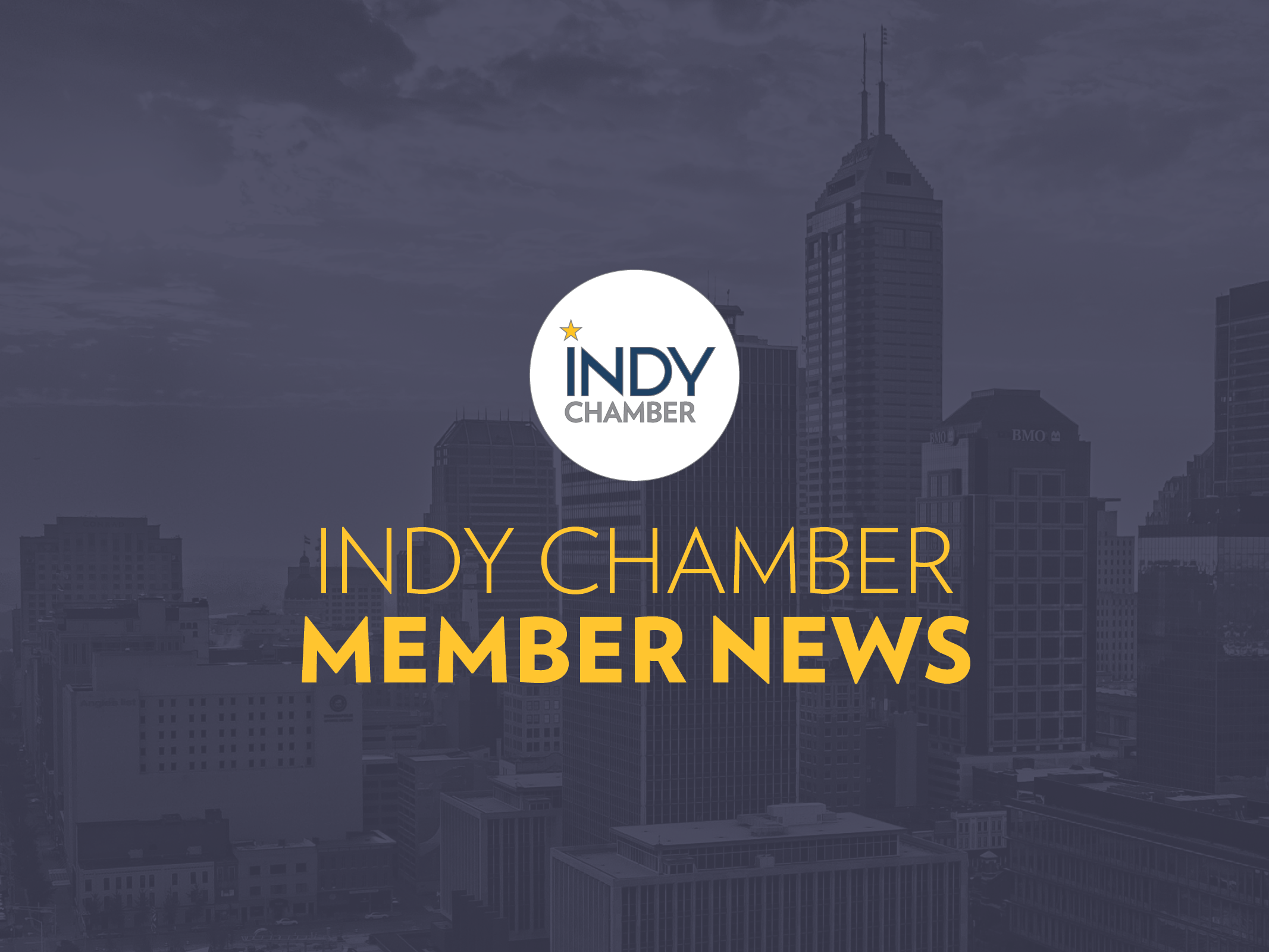Legislative Update: The Greatest Spectacle in Racing

The Greatest Spectacle in Racing…to Get the Budget Done
If you’re the type of person who held on to see the end of the 2004 Indy 500, you likely enjoyed last Thursday’s marathon session at the Indiana General Assembly (IGA). Or maybe you’re just the kind of person who likes to watch things go around and around. Either way, the 2023 Indiana General Assembly session is, as they say, in the books.
Time for a quick check on Indy Chamber’s 2023 Legislative Priorities to evaluate who got lucky, who’s hoping for a better ride next year—and whose face is getting etched on the Borg-Warner trophy. Read on for this week’s Indy Chamber update: Indy 500 edition.
Priority: Fund Indiana’s Roads
Few names get IndyCar fans clutching their favorite good-luck charms like the name Andretti. It doesn’t matter if the first name is Mario, Michael, Marco, Jeff, or John; no Andretti has won the Indy 500 since 1969, a dry spell so remarkable it spawned the legend of the “Andretti curse.” Incidentally, judging by the condition of many of our state’s roadways, you’d be forgiven for believing that 1969 was the last year in which Indiana’s roads were well-funded.
Well, if this year’s IGA session is a harbinger of things to come, we might all want to consider ordering an Andretti Motorsports t-shirt this weekend. For the first time since the Brickyard was brick, almost 200K people who live in Marion County—and drive on its roads—will figure into Indiana’s road funding formula, thanks to SB 283. While the $8M or so Indianapolis will receive every year in additional funding is less than last year's Indy 500 prize purse, the IGA’s willingness to make the change has believing all dry spells do come to an end.
Even more importantly, perhaps, is the creation in the final state budget (see HB 1001) of the “Funding Indiana's Roads for a Stronger, Safer Tomorrow” task force. The task force—which we’re hoping is dubbed “Roads FIRSST”—will be assigned to look for new revenue concepts to support an equitable road funding plan for a future in which the prevalence of electric vehicles makes over-reliance on gas tax revenues untenable.
Frankly, we believe we’re unlikely to see significant changes to the way the current pie of road funding is divided; that’s a process that creates winners and losers. Instead, we’re looking at legislators to put more ingredients into a bigger pie that allows for equitable distribution of funding without anyone feeling like they were forced to skip dessert.
Does all this talk of pie have anyone else thirsty for a glass of milk?
Priority: Invest in Hoosier Health
Given Indiana’s long history of ranking near the bottom of all U.S. states in per capita public health funding, the 2023 legislative session was clearly a positive development. This year found the Indy Chamber team in conversations about how, and how much, the state should invest in addressing Hoosiers’ physical and mental health needs—a big improvement over discussions in previous years over whether such investments are warranted. Given how fraught the national discourse on health spending has become, for the IGA to put $225M into beefing up public health services across the state is reason for optimism. Whether that optimism is well-founded—or whether it’s the kind Michael Andretti was feeling on lap 188 of the 1992 Indy 500—remains to be seen.To address Hoosiers’ mental health needs, legislators are investing $100M (via SB 1) over the biennium to build out mental health services infrastructure to pair with Indiana’s new 988 crisis response center and hotline, which gives Hoosiers in crisis someone to call, someone who will respond, and somewhere to go. And, speaking of places to go, law enforcement officers will be able to transport people experiencing mental health crises to a facility for treatment and services rather than a jail cell, thanks to Representative Greg Steuerwald’s House Bill 1006. That bill also creates a mechanism by which insurance and Medicaid can be charged for that treatment.
Senator Mike Crider, who led the charge on this critically important effort via SB 1, is correct in saying that the needed service infrastructure is going to cost more than what’s budgeted. But that cost up front for preventative care will pay dividends. That’s why investing in Hoosiers’ health, both physical and mental, will continue to be an Indy Chamber priority. We’ll need to capture and sustain the momentum coming out of this session to see real improvements in the health outcomes of Indiana’s workforce going forward.
Priority: Bridging the Talent Opportunity Gap
Speaking only for ourselves, watching this year’s cohort of education-related bills move through the Statehouse had us seeing flashbacks to footage of the 1966 Indy 500. Under clear, blue skies, the standard 33 gleaming racing machines rolled onto the track for the pace lap while 330,000 race fans cheered. Before the first lap was completed—well, before the first turn, really, 11 of those cars were out of the race and five more were damaged. By the time the checkered flag was out, only seven cars remained in the race, and there was confusion over who had actually won.Such were the fortunes of many K-12 bills during this legislative session. Thankfully, though, the Indy Chamber’s priority education bills managed to steer clear of debris and stay on the track. With HB 1449, Representative Earl Harris crossed off item number one on our legislative wish list by making 21st Century Scholarship enrollment automatic for all eligible students. The value of this achievement to Hoosier students’ futures is hard to overstate.
On average, 40% of Indiana’s high school graduates are eligible for the program, but fewer than half of them enroll. Even still, the state budgets for the full number of eligible 21st Century Scholars every year. Since 21st Scholars are nearly three times as likely to attend college than their low-income peers, and as or more likely to complete college than their higher-income peers, making enrollment automatic is a budget-neutral way of ensuring greater opportunity for all Hoosiers to enter the workforce with post-secondary education.
Corollary to Harris’ effort this session was the work of Senator Jean Leising, whose refusal to take no for an answer to the goal of increasing post-secondary enrollment through FAFSA completion, as seen in SB 167. Leising’s campaign to make completing the federal FAFSA a graduation requirement for most Indiana high school students is a low-cost strategy that gets students and their families all the information on how much financial aid they are eligible for as they determine their course after high school.
As a result of Harris’ and Leising’s leadership, post-secondary education is poised to become more accessible to Indiana’s low-income students than ever before. We’ll be raising glasses of ice-cold, Indiana-produced milk to these two lawmakers throughout the month of May.
Included in those toasts will also be Indiana’s Commissioner for High Education, Chris Lowery, who earlier this month delivered his first State of Higher Education address since taking on the role. In remarks that had us wishing we’d brought one of those giant, white, orchid wreaths each 500 winner wears in the winner’s circle, Lowery spoke about the benefits of a better-trained workforce. “Education beyond high school—whether it is a certificate, or a two-year or four-year degree—can be transformational,” Lowery said. “It is the cornerstone of economic vitality, individual social mobility, and civil society.” He also underlined the importance of retaining graduating students in Indiana, saying, “For Hoosier employers, educational attainment is the solution to developing a strong, future-oriented talent pipeline and remaining competitive in our global environment.” Lowery also noted that Indiana’s public institutions of higher education have improved on-time college completion by 11 percentage points, with nearly two out of three students completing college within six years. Singing one more verse of the “we couldn’t agree more” song, Lowery said our state’s next challenge is being “more intentional about getting students in front of Hoosier employers and getting them to stay here.” And heeee’s on it!
Connecting high school students to Hoosier employers is also a function of HB 1002, which establishes a career scholarship account program in Indiana. In our view, the final version of this bill is a solid example of making our education system more responsive to the market in a way that we believe will ultimately strengthen both Indiana’s education system and our talent pipeline. New programs like these take time to optimize, so the Indy Chamber stands ready to assist with implementation. Perhaps most importantly, the final language of the bill also included the addition of a “Career Awareness” class to high school students' course requirements—a straightforward and highly impactful step to assist students in selecting their career pathways.
Without question, overall funding for K-12 education had the bumpiest ride to the finish in 2023. Early in the session, House Republicans introduced a budget that created what amounted to universal school choice in Indiana through a significant expansion in the state’s voucher program—Senate Republicans did not include this provision in their version of the budget. Behind-closed-doors discussions between the two camps are rumored to have reached IRL v CART pitch, and House Republicans prevailed.
Meanwhile, the back-and-forth about whether and how charter schools would receive a portion of local education referenda funding had us dizzier than an IndyCar driver after a spinout. In the past week, there seemed to be consensus building around a proposal to let charter schools opt-in to receive a portion of referenda funding in exchange for forgoing the customary, state-funded charter grants; by Wednesday, that proposal had shifted into one that gave charter schools a portion of referenda funding and maintained their state grants. The voucher expansion and charter funding boost gave the appearance of a very healthy increase in the state’s education budget, but it seems one or more of the numbers crunchers forgot to…crunch. If they had, they would have spotted that, in a state with a $1.5B surplus, and a big increase in education spending, most traditional public schools would see a decrease in the second year of state funding if the budget was enacted as written.
Thus began Thursday’s mad dash to the finish, which thankfully saw lawmakers restore the $300M+ that traditional public schools were scheduled to lose. Our hope for the next budget session is that members of the IGA spend more time working on big issues like K-12 funding and less time on social issue distractions.
Priority: Outperform on Economic Development
If there was a Helio Castroneves Award—that is, an award for the driver who wins it all and makes it look easy—we’d suggest giving it to the Indiana Economic Development Commission this year. The IEDC team walked away from the budget session with everything they asked for, and then some. For starters, IGA members allocated $500M over the biennium to the READI 2.0 program to continue making investments in transformative projects in Hoosier communities. Another $500M was allocated for an IEDC deal-closing fund. Five percent of the fund is earmarked for communities of 50,000 people or fewer, a good strategy to ensure development happens in communities large and small across the state. Legislators also allocated $150M over the biennium to IEDC for site acquisition, further bolstering overall economic development efforts. Indiana Sports Corp. will be getting $10M over the next two years for its bid fund to help attract new and even-larger sporting events to the racing capital of the world.
In fact, economic development policy as a whole was firing on so many cylinders that Representative Ben Smaltz introduced a bill that would have required supplemental distributions of LIT reserve balances to counties with a trust account balance in excess of 11%. Although Smaltz’s bill wasn’t adopted, it did facilitate the first serious discussion on LIT reserves in—checking race clock—forever. It’s a discussion the Indy Chamber team believes must continue, as local units of government will need to be prepared to sustain and maintain the products of state investments in local and regional economic development. In a game where talent attraction and retention are crucial, quality of place becomes the make-or-break factor. To fully leverage the enhanced livability that results from the work of IEDC and Indiana Sports Corp., local units need sufficient resources to stay on the lead lap.
Priority: Advance the Vitality of Downtown
If you’re a 500 fan, you’re no doubt familiar with the way a car can suddenly emerge from the pack in the final dozen or so laps to win (think Takuma Sato in 2017). Such was the case this year with language to support the health of downtown Indianapolis, which had managed to stay in the race but hadn’t made many big moves until last week. With the budget session winding down, lawmakers agreed to give the Indiana Housing & Community Development Authority $20M in 2024 for the creation of a low-barrier homeless shelter grant program. Creating such a facility to address in sheltered homelessness downtown has been a priority for the Indy Chamber since our 2019 Leadership Exchange trip to San Antonio and visit to the campus of Haven for Hope, that city’s low-barrier shelter and system of care and recovery for people experiencing homelessness. Haven for Hope is achieving excellent results we believe can be reproduced in Indianapolis.
Understanding that a race car is useless without the fuel to run it, lawmakers also provided Indianapolis an option to consider supporting operations at the new shelter in the form of an Economic Enhancement District. This structure would be enacted via an ordinance from the Indianapolis City-County Council and would create sustained and dedicated funding for the Mile Square that could be used to sustain operations at the low-barrier shelter, be invested in public safety, cleanliness, and beautification, and activations of public spaces. Indianapolis is currently the largest city in the nation without such dedicated funding for its Central Business District. In an era where the challenges for downtowns are more intense than ever, we applaud the legislature for providing this tool as an option to accelerate the vitality of Downtown Indianapolis—the beating heart of the Hoosier state.
🏁 Checkered Flag 🏁
Every session at the Indiana Statehouse has its share of ups and downs—this was no exception. Caution flags and on-track wrecks notwithstanding, the Indy Chamber team is pleased to report meaningful progress on our core priorities. Important investments in Hoosier health and education help start the momentum to make even more transformative investments in the people of our state. Forward motion on road funding and exceptional investment in economic development readiness put us in a position to compete internationally. And prioritizing options for accelerating the vitality of Downtown Indianapolis is a game changer. We’ll be back in a couple of weeks for a deeper dive into what each of these challenges means for the business community. Until then—enjoy May in Indy!
An Opportunity to Act
We invite you to join our efforts. Be sure to tag @IndyChamber, @staylorhughes, and @Adam_Burtner on Twitter to show your support for legislation that's beneficial to your business and our state's success. Interested in supporting the #IndyChamberAdvocacy priorities? Click here to access a digital toolkit to help spread the word.
Never Miss an Update
Stay informed on all things Statehouse. The Indy Chamber's Business Advocacy team provides curated Legislative Updates every week. Sign up for one email a week!

Member Stories

New Service Offering – Racking and Systems

Join Our Newsletter
Quick Connect Links


